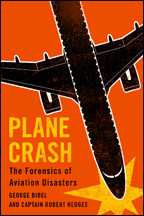
Reviews
An excellent book. The cases are well-chosen, the narrative is often gripping, and the use of primary sources, especially the intensive archival research conducted throughout the United States, is exemplary. Havoc and Reform will interest anyone concerned about the cause and mitigation of disasters.
James Kraft tells the fascinating stories of five major workplace disasters in the modern American West, reaching important conclusions about the nature of society, politics, and public policies in that region. Havoc and Reform is essential reading for anyone interested in business history, labor history, and the history of the American West.
James Kraft's vividly arresting account of modern workplace catastrophes shows how heartbreaking calamity has repeatedly triggered reforms that have protected both workers and the broader public. As we confront the dangerous work that persists in our warming, digitizing, pandemic-menaced world, we can learn much from this timely, ultimately hopeful narrative.
This book is a rare work of disaster scholarship that distinguishes itself in two important ways: first, through its distinctive focus on workers, and second, by providing vignettes of specific individuals that enliven abstract concepts such as the altruistic community.
Havoc and Reform is a timely look at workplace disasters. James Kraft has scrutinized post–World War II tragedies far from the country's slowly rusting Steelbelt, including two passenger airliners colliding over the Grand Canyon and the Oklahoma City bombing. These and other disasters changed employees' lives and attitudes, executives' business practices, and the government policies that continue to shape twenty-first century workplaces.
Book Details
Acknowledgments
Introduction
1. Disasters at Work: A Brief Background
2. Chemical Plant Explodes in Texas City!
3. Airliners Collide over the Grand Canyon!
4. Hospitals Collapse in Southern California!
5
Acknowledgments
Introduction
1. Disasters at Work: A Brief Background
2. Chemical Plant Explodes in Texas City!
3. Airliners Collide over the Grand Canyon!
4. Hospitals Collapse in Southern California!
5. MGM Grand Burns in Las Vegas!
6. Federal Building Bombed in Oklahoma City!
Conclusion
Notes
Essay on Primary Sources
Index






